22 Authentic Traditional Northern Mexico Foods to Explore
Northern Mexico's culinary landscape brims with rich, hearty flavors that tell stories of cultural heritage and regional pride.
These traditional foods reflect generations of agricultural wisdom and livestock-raising practices unique to the area's rugged terrain.
Robust ingredients and time-honored cooking techniques transform simple components into memorable meals that warm both body and soul.
Ranching communities have long cultivated distinctive recipes that showcase local meats, grains, and seasonal produce with remarkable creativity.
Families pass down these cherished preparations, maintaining connections to ancestral cooking methods that honor their geographic roots.
Regional spices and marinades contribute depth and character to dishes that represent more than mere sustenance.
These culinary traditions capture the spirit of northern Mexican communities, blending indigenous influences with Spanish colonial contributions.
Dive into these 22 mouthwatering traditional northern Mexico foods that promise to transport you through flavor and history:
Traditional Northern Mexico Foods Full of Soul
Northern Mexico’s kitchens blend fire-roasted flavors, tender meats, and bold chilies. Meals here are meant for family and festivity.
Chilorio
Chilorio represents a zesty Sinaloan specialty featuring tender pulled pork slow-cooked in a spicy chili sauce infused with oregano, garlic, and cumin.
Mexican families traditionally transformed this meat preservation technique into a versatile filling for tacos, burritos, and enchiladas across northern Mexico.
Regional cooks originally developed chilorio as a method to extend meat's shelf life in hot climates before refrigeration.
Pork is carefully shredded and fried until crispy and deeply seasoned with complex spice blends.
Street vendors and home cooks often prepare large batches for gatherings and celebrations.
This iconic dish reflects Sinaloa's rich culinary heritage and resourceful cooking traditions.
Caldo De Queso
Caldo de queso embodies Mexican comfort food with its creamy, warming soup blending potatoes, green chilies, and melted cheese in a rich chicken broth.
Mexican home kitchens craft this simple yet satisfying dish as a quick meal that combines hearty ingredients and smooth textures.
Monterey Jack or queso fresco provide the signature cheese element that transforms the broth into a silky liquid.
Careful cheese addition prevents clumping and ensures even melting throughout the soup.
Crispy fried corn tortilla chips accompany the soup, offering a crunchy contrast to the smooth broth.
Home cooks typically prepare this soup during cooler months as a warming meal.
Families often enjoy caldo de queso as a weekend lunch or casual dinner option.
Tacos Gobernador
Tacos gobernador represent a signature seafood taco originating from Sinaloa, Mexico, featuring succulent shrimp as its star ingredient.
Regional chefs crafted these tacos to honor a local governor, filling warm tortillas with fresh shrimp, melted cheese, chopped coriander, onions, and tomatoes.
Skilled cooks carefully fold the tortillas in half, generously brush them with butter, and grill them to golden perfection on a hot griddle.
Medium heat ensures a crispy exterior while maintaining the shrimp's tender texture.
Lime wedges and spicy chili sauce traditionally accompany these flavorful tacos, enhancing their zesty profile.
Beyond Sinaloa, these tacos have gained popularity across Baja California.
Seafood lovers particularly enjoy this dish for its rich maritime flavors and satisfying combination of ingredients.
Burrito
Burritos are massive handheld Mexican wraps packed with savory ingredients inside soft wheat tortillas that completely seal multiple flavor components.
Spanish translations reveal "little donkey" as the dish's curious nickname, potentially referencing how bedrolls looked when strapped to transport animals.
Historians trace burrito origins to 19th-century Northern Mexican vaqueros or California farmers who needed portable meal solutions.
Meat, beans, rice, lettuce, guacamole, and cheese create traditional filling combinations that satisfy hunger efficiently.
Street vendors and restaurants across Mexico and the United States popularized these convenient meals.
Southwest regions especially embraced burritos as quick, filling options.
Authentic versions demonstrate complex culinary craftsmanship through carefully selected and balanced ingredients.
Queso Chihuahua
Queso Chihuahua is a smooth Mexican cow's milk cheese prized for its exceptional melting properties and versatile culinary applications.
Originating from Mennonite communities in Chihuahua, Mexico, this pale yellow cheese features a supple, firm texture and mild, buttery flavor with subtle sharpness.
Chefs and home cooks frequently use Queso Chihuahua in quesadillas, queso fundido, and chilaquiles, while its creamy consistency makes it ideal for baked casseroles and rich cheese sauces.
Its natural rind and smooth meltability distinguish this cheese from other Mexican varieties.
Mennonite settlers first developed this cheese, which quickly became a staple in regional cuisine.
Mexicans enjoy Queso Chihuahua as a versatile table cheese and key ingredient in numerous regional recipes.
Aguachile
Aguachile is a zingy Mexican seafood dish bursting with fresh raw shrimp marinated in spicy lime juice and chili water.
Originating from Sinaloa, this vibrant ceviche-style preparation requires ultra-fresh shrimp quickly coated in citrus and chili sauce.
Classic versions feature cucumber and red onion as key accompaniments, with creamy avocado and crisp tostadas completing the plate.
Restaurants typically serve aguachile with cold beer or tequila to complement its sharp, bright flavors.
Skilled cooks balance the zesty lime with fiery chilies, creating a complex taste profile that awakens every sense.
Mexicans consider aguachile a summer staple, perfect for hot days and beach gatherings.
Summer parties and coastal regions showcase this refreshing dish as a crowd-pleasing appetizer that delivers intense, immediate flavor.
Ceviche De Sierra
Ceviche de Sierra represents a zesty seafood specialty from Mazatlan's coastal waters, featuring fresh mackerel marinated in bright lime juice and transformed with crisp vegetables.
Fishermen traditionally prepare this dish by finely chopping mackerel and blending it with tangy lime, salt, and an array of complementary ingredients.
Serrano peppers provide a sharp heat to the mixture, while chopped onions, carrots, and cucumbers add texture and depth to the seafood base.
Local cooks enhance the dish with optional ingredients like diced avocado or chopped tomatoes for additional richness.
Oregano seasons the mixture, creating a balanced flavor profile that highlights the mackerel's natural taste.
Ingredients are carefully mixed and served chilled, allowing the lime juice to "cook" the fish through its acidic properties.
Regional families often enjoy this refreshing ceviche as a light meal or appetizer during warm coastal afternoons.
Nachos
Nachos are a Mexican snack born from quick culinary improvisation, created by Ignacio "Nacho" Anaya in 1943 for US Army Air Force officers' wives at Piedras Negras' Victory Club restaurant.
Anaya spontaneously crafted the dish when no cook was available, using tortilla chips, melted cheese, and jalapeno peppers as an impromptu appetizer.
He strategically layered crispy tortilla chips with warm, gooey cheese and spicy peppers, creating an instant crowd-pleaser.
His ingenious combination quickly gained popularity and spread across Mexico and the United States.
Restaurant patrons loved the simple yet flavorful dish that could be easily prepared.
Nachos became a standard bar and party food, embraced by sports fans and casual diners.
The name "nachos" directly references Ignacio's nickname, immortalizing his culinary innovation.
Cabrito
Cabrito is a succulent roasted goat kid delicacy originating from Monterrey, Mexico, celebrated for its tender meat from young goats under three weeks old that have exclusively consumed mother's milk.
Beyond Mexico, this traditional dish enjoys popularity in Brazil, Argentina, Spain, and Portugal.
Strict preparation guidelines ensure maximum flavor and quality.
Skilled cooks carefully select young goats to guarantee meat's exceptional tenderness.
Each cooking method highlights different flavor profiles and culinary techniques.
Small regional differences showcase the dish's rich cultural significance across Latin American and Iberian cuisines.
Sope
Sopes are traditional Mexican corn masa disks with pinched edges that create a delicious border for holding toppings, serving as a compact culinary canvas across Mexico's diverse regions.
Small thick corn dough disks are fried and topped with beans, meat, cheese, and sauce in a style sometimes compared to Mexican pizza.
Each state crafts its unique interpretation, reflecting local ingredients and preferences.
Sopes can be enjoyed as appetizers, main courses, or versatile meal options throughout the day.
Their distinctive pinched edges prevent toppings from falling off, creating a practical and flavorful eating experience.
Corn masa forms the foundation of these savory snacks, demonstrating Mexico's deep connection to traditional ingredients.
Street vendors and home cooks alike prepare sopes as a beloved staple of Mexican cuisine.
Coyotas
Coyotas are iconic Mexican pastries originating in Sonora, crafted with a distinctive flour dough and sweet piloncillo sugar filling.
Sonoran bakers created these cookies in the 19th century as a unique regional treat blending indigenous and Spanish culinary influences.
Mexican women of mixed heritage inspired the cookie's name, which translates to "female coyote" in local dialect.
Traditional preparation involves carefully rolling thin dough and stuffing it with rich, unrefined piloncillo sugar.
Bakers shape the cookies into flat, round discs before baking them to golden perfection.
Regional bakeries continue producing these cookies using generations-old techniques.
Hermosillo remains the primary birthplace and cultural center for this beloved Sonoran pastry.
Carne A La Tampiquena
Carne a la tampiquena stands as a legendary Mexican beef specialty originating in Tampico, Tamaulipas, crafted by brothers Jose Ines and Fidel Loredo in 1939 at their Club Tampico restaurant.
Restaurant patrons initially enjoyed this innovative meal during almuerzo huasteco breakfast services featuring grilled beef alongside multiple complementary ingredients.
Skilled chefs carefully grill tender beef cuts and serve them with classic Mexican accompaniments like enchiladas, cecina, and fresh queso fresco.
Beef preparation involves marinating meat in robust spices and grilling it to perfect tenderness.
Traditional presentation includes multiple small side dishes that enhance the protein's rich flavors.
Regional spices and cooking techniques contribute significant depth to this iconic meat preparation.
Mexican culinary traditions shine through complex flavor combinations and precise cooking methods.
Tamaulipas regional ingredients elevate this dish from simple meal to gastronomic experience.
Danger Dog
Danger dogs electrify street food culture with their irresistible blend of grilled bacon-wrapped sausages nestled in soft bolillo rolls.
Mexican street vendors pioneered this mouthwatering snack in border regions like Tijuana, where hungry patrons crave bold flavor combinations.
Crispy bacon encases juicy sausages, creating a crackling exterior that seals in rich meats.
Toppings transform simple street fare into a flavor explosion with fresh jalapeño salsa, creamy mayonnaise, zesty mustard, and chopped onions.
Tomatoes and beans add extra texture and depth to each messy, satisfying bite.
Street food enthusiasts consider danger dogs a late-night staple that offers quick, affordable sustenance.
Affordable ingredients and simple preparation make this street classic accessible to everyone seeking a quick, flavor-packed meal.
Empanadas De Santa Rita
Empanadas de Santa Rita burst with rich Mexican flavors from Chihuahua, exclusively prepared on Saint Rita's feast day each May 22nd.
These unique pastries feature a tender flour-based dough crafted with butter and milk, creating a delicate wrapper for a complex filling.
Ground beef anchors the savory interior, complemented by an unexpected blend of raisins, potatoes, peas, and crunchy pecans.
Sherry adds depth to the meat mixture, while aromatic spices like cinnamon and cloves enhance the overall taste profile.
Onions and garlic provide traditional Mexican seasoning to the filling.
Residents of Chihuahua consider these empanadas a special culinary tradition tied to religious celebration.
Families and community members gather to enjoy this once-a-year delicacy that honors Saint Rita's memory.
Chile Pasilla Con Queso
Chile pasilla con queso ranks as a savory Mexican pepper dish featuring roasted pasilla chilies melted with rich cheese.
Originating from Chihuahua, Oaxaca, and Puebla regions, this spicy specialty combines dry pasilla peppers with onions, tomatoes, and creamy Oaxaca or mozzarella cheese.
Cooks carefully soak dried chilies in water before sautéing them with chopped onions and tomatoes in olive oil.
Salt enhances the pepper mixture's robust flavor profile during cooking.
Chefs layer cheese atop the simmering pepper blend, allowing it to slowly melt and create a smooth, intense texture.
Traditional preparation involves pouring reserved chili water into the pan to deepen the dish's complex taste.
Served alongside warm tortillas, this pepper and cheese combination offers a genuine taste of Mexican cuisine.
Mexicans often enjoy this dish as a comforting side or light main course during family gatherings.
Machacado Ranchero
Machacado ranchero emerges as a robust Mexican beef specialty from Coahuila, featuring shredded sun-dried beef transformed into a savory culinary experience.
Ranchers traditionally beat beef cuts with a bat to tenderize the meat before drying it under intense sunlight.
Cooks carefully chop the dehydrated beef into fine pieces and fry it in lively lard until achieving a golden-brown crispness.
Regional spices like cumin, allspice, hot peppers, and garlic infuse deep southwestern flavors into the dish.
Onions and tomatoes complement the meat's intense profile, creating a complex taste sensation.
Salt and flour help bind the ingredients, enhancing the texture and depth of the preparation.
Mexican families often serve machacado ranchero as a hearty breakfast or quick midday meal.
Authentic versions highlight the meat's rich, concentrated flavor and traditional preparation methods.
Gallina Pinta
Gallina pinta is a hearty Sonoran soup bursting with rustic flavors from the Mexican northwest region.
Speckled hen describes its colorful mix of white corn, red chili peppers, and brown beans that create a vibrant base.
Oxtail pieces and pork spareribs add rich depth to the broth's complex profile.
Cooks carefully simmer these ingredients with onions, garlic, salt, and peppercorns to develop intense layers of taste.
Regional families have prepared this traditional soup for generations as a comforting meal during cool evenings.
Hunters and ranchers especially enjoy its substantial protein-packed composition.
Asado Mazatleco
Asado mazatleco represents a signature Mazatlán street food featuring tender cubed steak seared with potatoes and vegetables in a rich tomato sauce.
Mexican cuisine from Sinaloa state celebrates this hearty dish with robust flavors and simple ingredients.
Local restaurants in Mazatlán often serve the meal with refried bayo beans on the side.
Regional cooking techniques transform basic ingredients into a satisfying main course.
Home cooks typically start by frying beef and potatoes in oil until golden brown.
Vegetables like onions and peppers enhance the meat's natural taste.
Tomato sauce provides a smooth, warm coating for the entire dish.
Bayo beans complement the asado's savory profile with their creamy texture.
Empalme
Empalme are stacked corn tortillas layered with bold Mexican flavors and hearty ingredients from Nuevo Leon.
Mexican street vendors traditionally prepare these sandwiches by brushing tortillas with lard and stacking them with rich refried beans.
Tangy tomato salsa provides a zesty base layer for the street food classic.
Spicy chorizo sausage adds depth and protein to the sandwich when included.
Hot chile peppers contribute an extra kick of heat and complexity to the dish.
Crumbled queso fresco sprinkled on top offers a creamy, fresh contrast to the warm tortillas.
Regional cooks sometimes compare empalme to a cross between an enchilada and a Mexican pizza.
Small variations in ingredients make each empalme a unique street food experience.
Enchiladas Coloniales
Enchiladas coloniales showcase Mexico's Chihuahua region's culinary creativity through a rich layered chicken dish featuring crispy corn tortillas wrapped around tender shredded meat.
Mexican home cooks expertly fry tortillas and coat them with a spicy sauce blending chili peppers, onions, garlic, and tomatoes.
Chicken fills each tortilla before rolling and arranging them in a baking dish.
Generous layers of sour cream and grated cheese crown the enchiladas before baking.
Intense flavors develop as the dish turns golden brown and slightly crispy around the edges.
Traditional preparation demands careful sauce construction and precise layering techniques.
Regional ingredients contribute authentic southwestern Mexican character.
Warm temperatures and fresh components make this dish a beloved family meal.
Torta De La Barda
Torta de la barda encompasses a hearty Mexican sandwich bursting with regional flavors from Tampico's bustling maritime history.
Sailors and railway workers originally created this massive sandwich to fuel long workdays near the city's marine terminal fence.
Street vendors developed the multilayered masterpiece using crusty white bread rolls like telera or bolillo.
Generous fillings include tender shredded beef, crispy pork rinds in green salsa, creamy refried beans, and rich pork cheese head.
Additional ingredients feature thinly sliced ham, melted cheese, fresh tomatoes, sharp onions, smooth avocado slices, and spicy Mexican chorizo.
Regional bread variations depend on local preferences across different Mexican states.
Mangos A La Canela
Mangos a la canela are sweet Mexican dessert delicacies featuring ripe mangos simmered in a cinnamon-infused syrup.
Native to Tamaulipas, this simple yet elegant treat transforms fresh mangos into a luscious dessert with minimal ingredients.
Chefs typically select large, ripe mangos and combine them with sugar and cinnamon sticks.
Water helps dissolve the sugar and create a smooth, fragrant syrup during gentle cooking.
Heat transforms the mango's natural sugars, intensifying its tropical flavor profile.
Cinnamon adds warmth and depth to the dessert's overall taste.
Mexicans often serve this dish chilled as a refreshing end to meals.
Families enjoy mangos a la canela as a traditional summer dessert that highlights fresh fruit's natural sweetness.
How Did Cowboy and Ranching Culture Shape Northern Mexican Cuisine?
Northern Mexican cuisine is deeply influenced by its cowboy and ranching heritage, shaping the region’s flavors, ingredients, and cooking techniques:

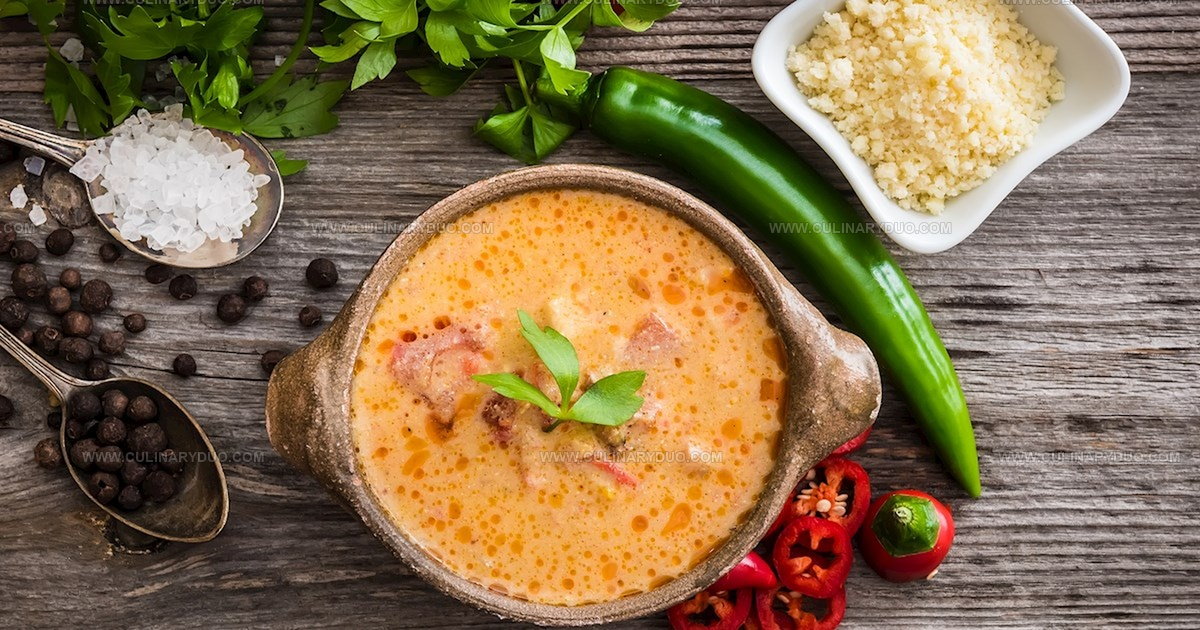
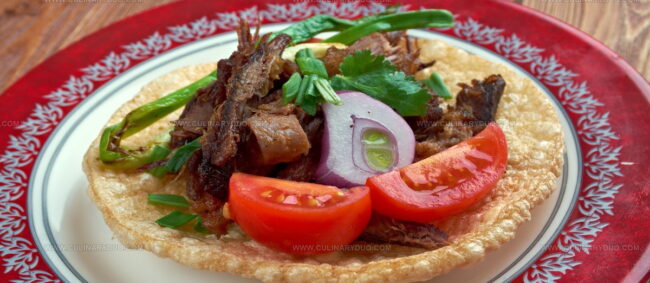
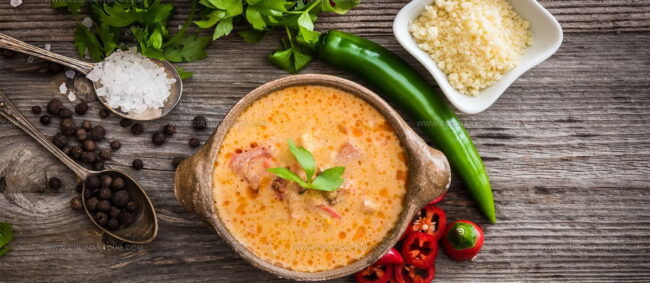
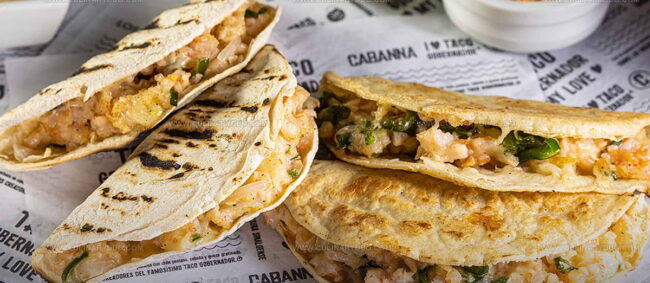
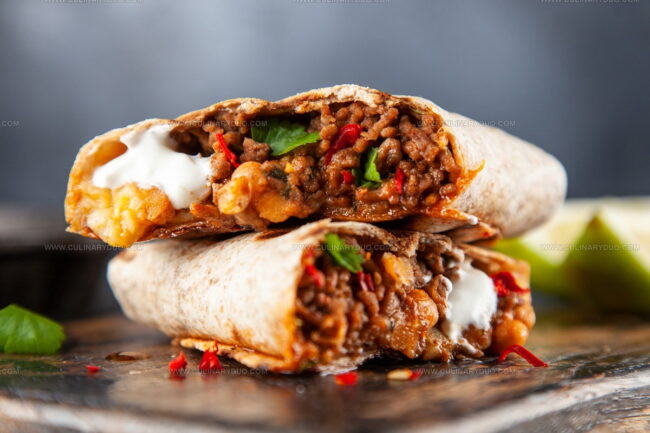
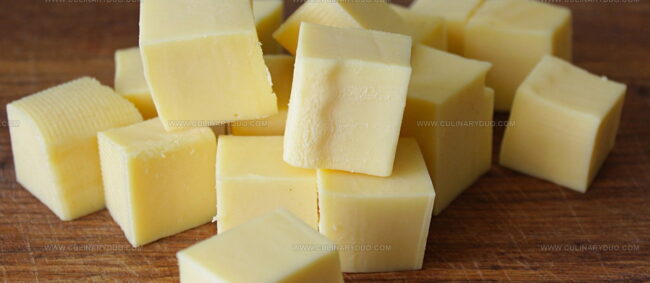
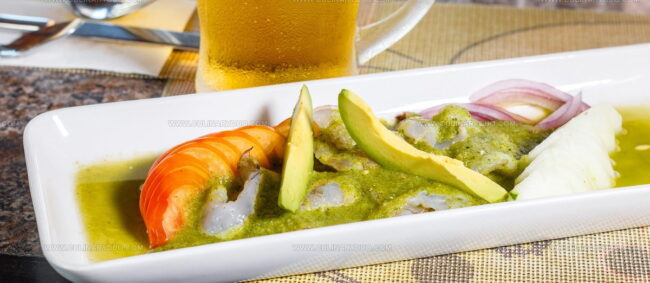
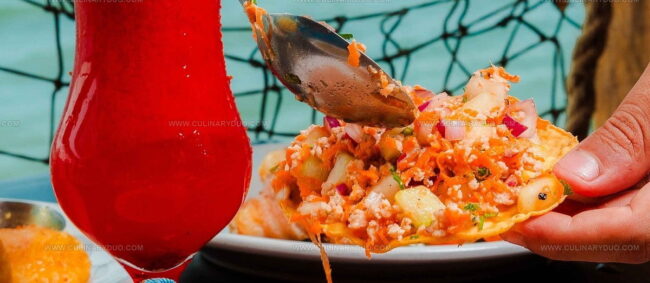
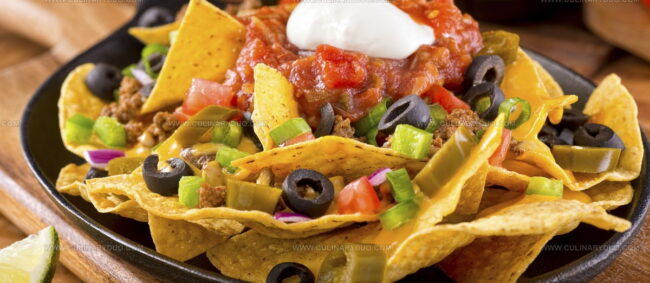
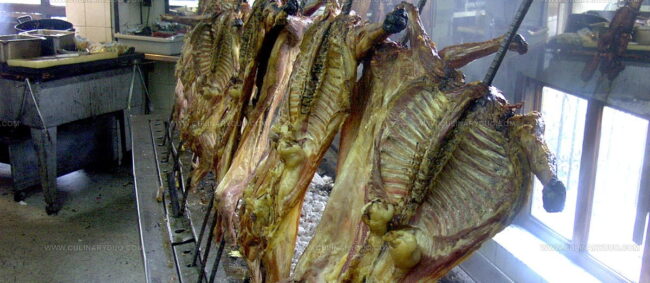
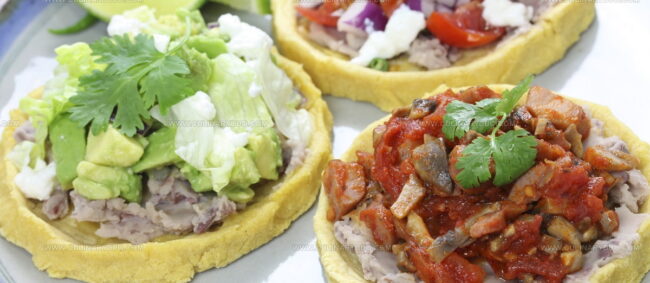


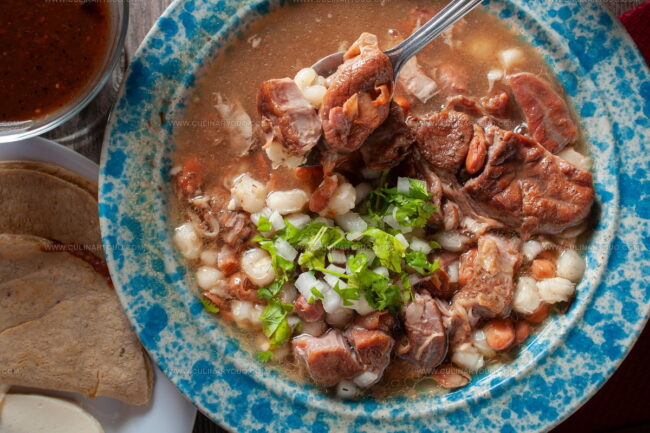
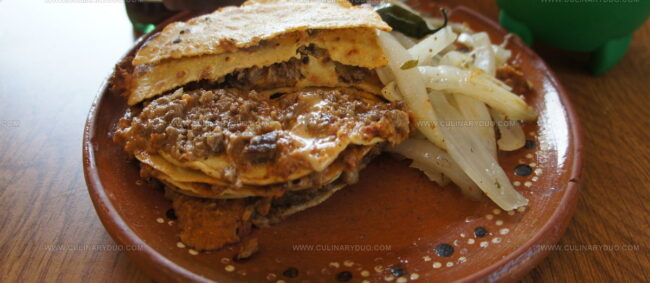
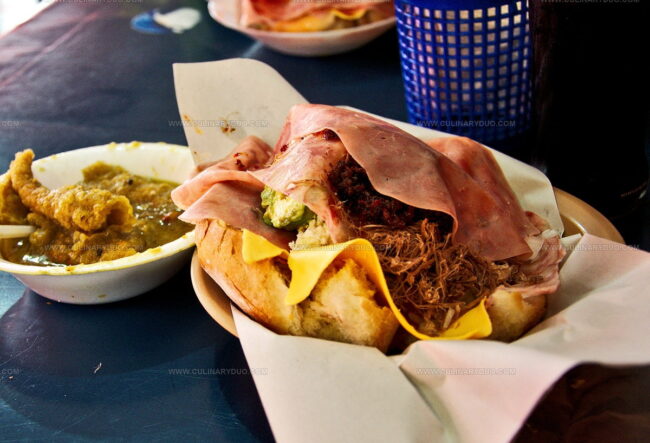
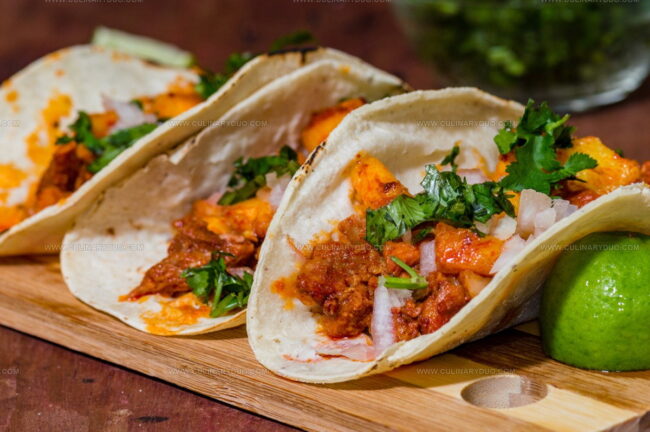
Michael Reyes
Founder & Lead Recipe Developer
Expertise
Education
Santa Fe Community College
Michael’s love for cooking runs deep, rooted in the bold, colorful flavors of his New Mexico upbringing.
After earning his Culinary Arts Certificate from Santa Fe Community College, he spent years sharpening his skills in kitchens that celebrated traditional Southwestern and Latin American dishes.
He believes cooking should feel approachable and fun, never complicated. When he’s not stirring up new recipe ideas, Michael’s out hiking scenic trails, chatting with farmers at local markets, or chasing the perfect sunset shot for inspiration.